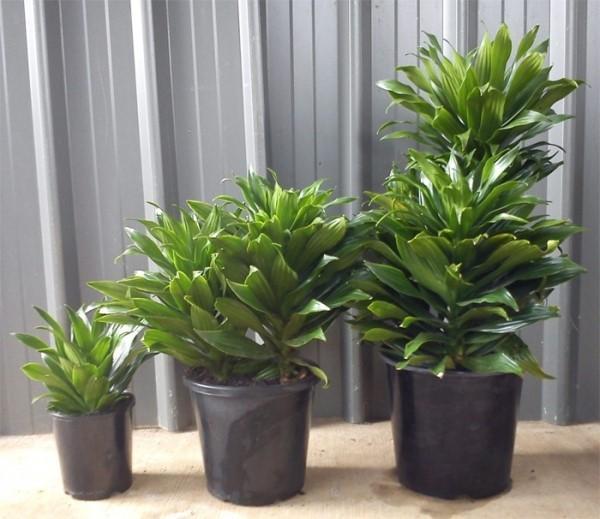Meet the smallest Dracaena Compact
 Dracaena is often grown at home due to its unpretentiousness, ease of care and beautiful decorative appearance. Usually these are tall plants, especially in adulthood. For this reason, they live mainly on the floor or, in extreme cases, on a low stand, because a meter or more bush is difficult to keep on a windowsill.
Dracaena is often grown at home due to its unpretentiousness, ease of care and beautiful decorative appearance. Usually these are tall plants, especially in adulthood. For this reason, they live mainly on the floor or, in extreme cases, on a low stand, because a meter or more bush is difficult to keep on a windowsill.
However, what should those dracaena lovers who do not have free space for large plants do? Do not despair, among the variety of varieties there are also plants of quite miniature sizes, one of which is the dracaena Compact.
Features of the variety
The average height of the compact dracaena bush is 30-40 cm, rarely when it grows above 70 cm.The main decoration of the flower is the long narrow leaves of dark green color with a glossy sheen, growing in a bunch. In the process of growth, new layers of leaves appear on the shortened stem, forming a lush crown of the bush.
Unlike other representatives of the Compact species, it is one of the most resistant dracaena in terms of temperature. She well tolerates short-term drops, even up to 10 degrees Celsius, while for other varieties, 15 degrees are already critical.
How to care for dracaena Compact?
Like all dracaena, Compact does not tolerate stagnant moisture, so it is better not to overdo it with watering. The next "infusion" should be done no earlier than the soil dries out 2-3 cm deep.
Yellow spots on dracaena leaves are a signal that it is being watered too often.
The flower, in principle, loves spraying, but it must be done very carefully so that water does not get into the funnels of the leaves, otherwise they will rot.
The compact is simply created for northern windowsills, where it is better to put it for the summer. She feels great in shady places, and the foliage retains its rich color. But the southern windows for a flower are contraindicated - the sun's rays burn out the leaf plate, from which ugly spots appear on it and this process is irreversible. Such leaves can no longer be saved, and all that remains is to cut them off, due to which the appearance of the bush suffers and it loses its decorative effect.
Diffused lighting is what the dragon tree needs.
Feeding mode
During the rest period, when growth processes are inhibited, dracaena (pictured) do not need additional food. But with the onset of spring, it is simply necessary to fertilize the flower twice a month (every two weeks) using complex mineral preparations.
Fertilizers such as:
- Kristalon for ficuses and palms (from Fertika);
- liquid fertilizer Biopon for yucca, dracaena and palm trees;
- Florovit for dracaena, Cordilin and palms.